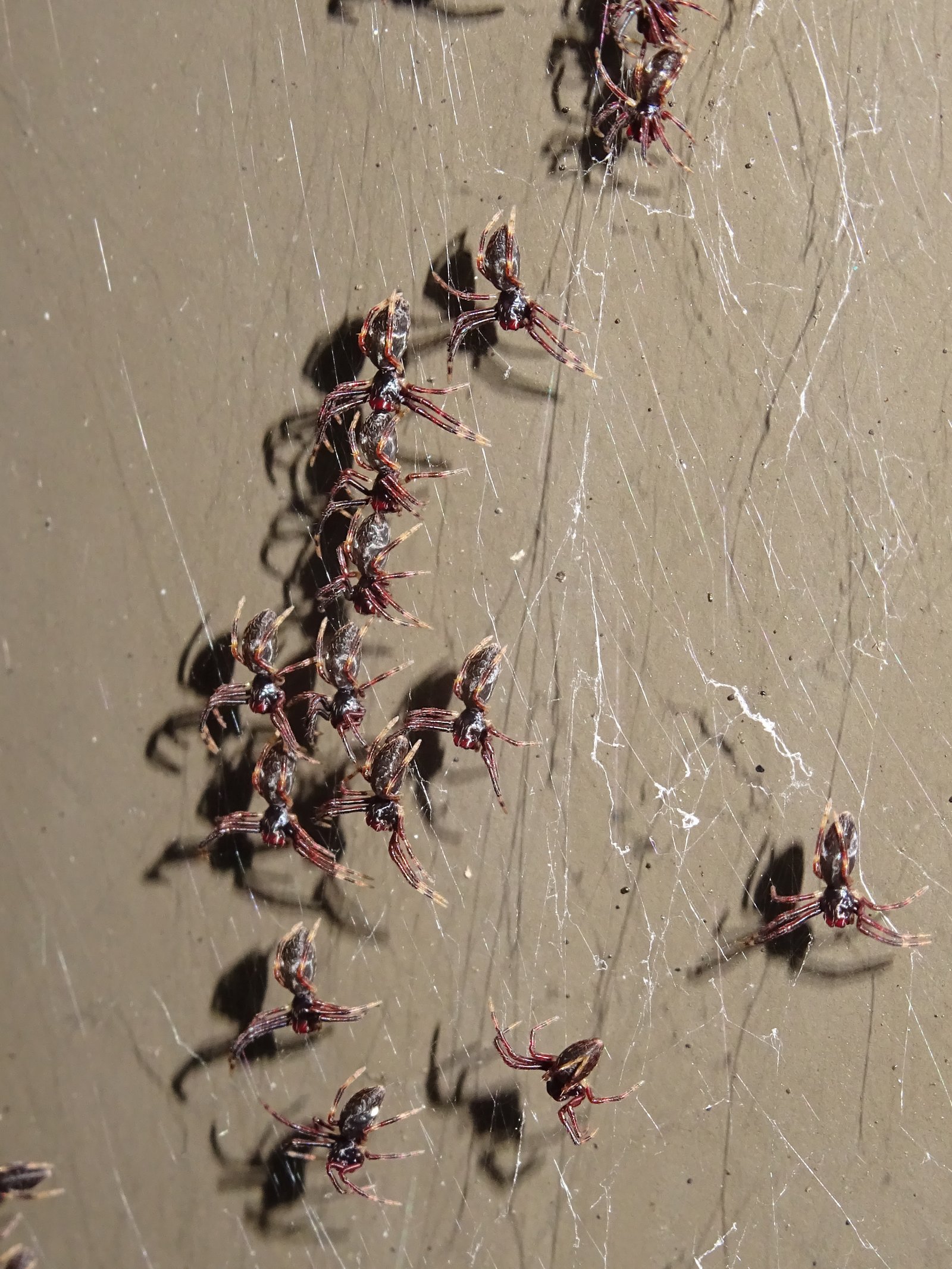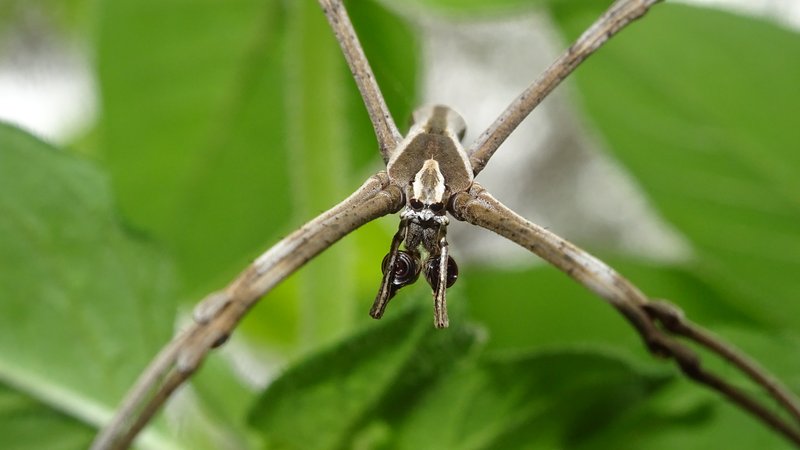Rufous Net-casting Spider
Introduction
These slender, long-legged spiders have eight eyes, two of which are enormously enlarged and face forwards, looking rather like searchlights.
Identification
These slender, long-legged spiders have eight eyes, two of which are enormously enlarged and face forwards.
Asianopis subrufa was previously included in the genus Deinopis, which now only contains New World species. Females are light salmon-brown; the abdomen bears two low humps midway along the sides and has small orange patches underneath.
Males are shorter and thinner with spindly legs; the body has dark and light grey longitudinal stripes above and a pair of small white horns on the head over the eyes.

© Australian Museum
Habitat
Net-casting spiders are common in bushland and gardens. Although they someimes hunt by day, most often they hide, stick-like, among foliage. By night they build beautiful little webs about the size of a postage stamp and made of thick, bluish-white cribellate silk. An undamaged web may be carefully left suspended among vegetation ready for re-use the following night.
Distribution
Eastern Australia from Tasmania to southern Queensland in forest, woodland and heathland habitats (Queensland, New South Wales, Victoria, Tasmania).
Feeding and diet
The prey-catching method of net-casting spiders is unique. At night they build a rectangular, postage-stamp-sized web, made with wool-like, entangling silk threads. These little nets are made among low vegetation, usually above a surface across which prey animals are likely to walk (e.g. a broad leaf , a tree trunk or even a house wall). After spinning its web the spider deposits some spots of white faeces on this surface to act as aiming points. The spider hangs head down from a trapeze of silk, holding the net in its front pairs of legs; and there it waits, its enormous eyes watching for prey movement across the white aiming spots. When an insect passes over the white target spots, the spider opens the stretchy web to two or three times its resting size and lunges it downward over the unsuspecting prey. The clinging silk net envelopes the insect, which is then rapidly bitten and wrapped. While eating its catch, the spider may start making a new net for its next meal. Prey animals include cockroaches, ants, spiders and even moths - net-casters seem sensitive to air currents and will lunge the net towards aerial prey. Prey as large as male trapdoor spiders and gryllacridid wood crickets are taken.
Other behaviours and adaptations
The Net-casting spiders' large eyes provide outstanding low-light night vision. Their compound lenses have an F number of 0.58 which means they can concentrate available light more efficiently than a cat (F 0.9) or an owl (F 1.1). The image is focussed onto a large, light-receptive retinal membrane (which is destroyed at dawn and renewed again each night).
Life history cycle
Net-casting spiders mature in summer, with mating and egg-laying taking place into autumn. The male attaches a mating thread to the female's net support lines and jerks it to entice her onto it for mating. The egg sacs are round balls, 9-10 mm in diameter, covered with a tough, closely woven layer of salmon-brown silk flecked with black. The sacs are suspended on vegetation and disguised with twig and leaf litter detritus. Up to four sacs may be produced. The dark brown spiderlings emerge in spring and look like a cloud of little anchors (narrow body and extended front legs) hanging in silk lines above the egg sac. In a few weeks they start building their own tiny nets.
Danger to humans
No interactions with humans or threats to net-casters have been identified.
References
- Austin, A.D. and Blest, D.A. (1979). The biology of two Australian species of dinopid spider. Journal of Zoology, London 189: 145-156.
- Clyne, D. (1967). Note on the construction of the net and sperm web of the cribellate spider Dinopis subrufus (Koch) (Araneidae: Dinopidae). Australian Zoologist 14: 189-197.
- Framenau, V.W., B.C. Baehr and P. Zborowski. 2014. A guide to the spiders of Australia. New Holland Publishers.
- Mckeown, K.C. (1963). Australian Spiders. Angus and Robertson.


